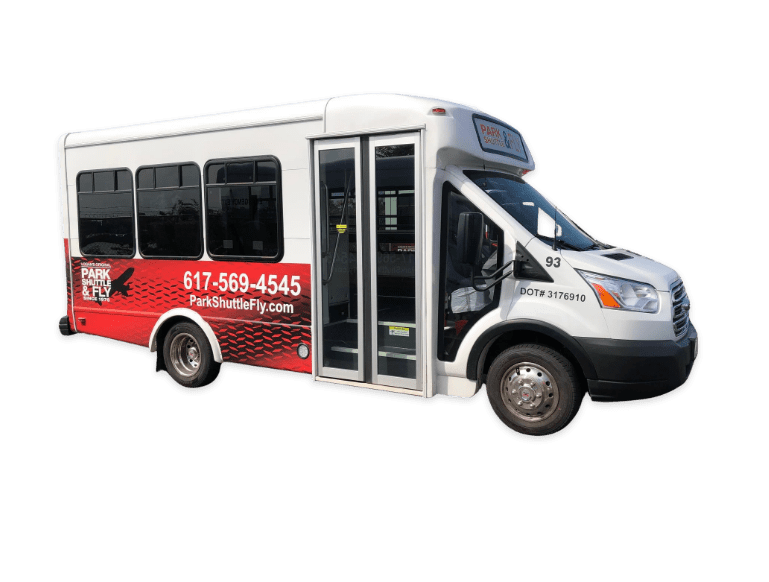
Posted On: October 16th, 2018 Author: Renee Ciaramella
Owning a car can be pretty expensive, but it’s often unavoidable, especially if you need a vehicle to get to and from work and to go about your day-to-day errands. One expense people don’t often calculate when figuring out how much owning a vehicle costs is parking.
Unless you only go to places with free parking lots and garages, the cost of parking can add up. In the U.S., the average cost to park a vehicle for one day (eight hours) is $14.85. Average monthly parking costs are just under $200.
Although paying for parking can eat into your budget, there is good news. In some instances, you can claim parking expenses as a tax deduction. Read on to learn more about when you can deduct the cost of parking and other transportation-related expenses and how to do so on your tax return.
It’s important to understand when you can deduct transportation expenses, including parking, and when you can’t deduct those expenses. For example, if you travel to your employer’s office from your home to work every day, you aren’t able to deduct those transportation expenses. Those non-deductible expenses include gas, wear-and-tear on your car, parking and public transit.
The Internal Revenue Service (IRS) considers travel expenses incurred by the commute between your home and primary place of employment “personal commuting expenses.” That means you can’t deduct the cost of gas, wear-and-tear or parking when you commute between home and your primary place of business or employment.
Transportation expenses become tax deductible when a second or even third place of business or employment enters the mix. Once you’re no longer traveling to your primary place of business or employment, you can usually deduct the costs associated with your travel. The expenses are deductible whether the second location is a temporary or permanent.
If you feel like your head is spinning from trying to understand the rules, here are a few examples that help to illustrate when you can and can’t deduct travel or transportation-related expenses on your tax return.
Why can’t you deduct the cost of getting to and from your regular place of business or work from your taxes? Mainly because the IRS doesn’t consider commuting expenses to be “ordinary and necessary” expenses.
An ordinary expense is one that’s very common in your business or industry, while a necessary expense is one that is appropriate and helpful in your line of work. While you could argue that you need a car to get to work and need to park your car once you arrive at your office, the IRS could counterargue that you could live within walking distance of your job, take a bus or train to get to work or find another way to commute. Since you have some freedom when it comes to where you live, where you work and how you get to work, your commuting choices can’t be considered ordinary and necessary expenses.
Depending on your line of work, there might be times when you need to travel for your job. The IRS defines travel differently from commuting or transportation and has different rules when it comes to deducting travel expenses, such as airport parking, on your tax return.
According to the IRS, you’re traveling away from home if you meet the following requirements:
In the world of the IRS, your “tax home” is the location where you usually do your work. It’s not necessarily where you live. For example, if you live in Philadelphia but work in New York City, the NYC metro area is your tax home, not the Philadelphia metro area.
You can deduct a lot more if you are traveling for work compared to commuting for work, especially if you are self-employed. The list of work or business-related travel expenses includes:
If you can deduct costs associated with using your car for work, you have two options when it comes to calculating the amount of the expenses. Option one is to use the standard mileage deduction. With the standard mileage deduction, you subtract a set amount for each mile you drive your car for business. As of 2017, the standard mileage deduction was 53.5 cents per mile. The rate varies from year to year. Some years, it’s considerably higher than in other years.
The second option is to keep track of the actual expenses associated with driving your car for business. That means keeping track of what you pay in tolls, how much you spend on gasoline and what you’re paying for parking.
You have to choose either one method or the other. You can’t pick both. You do have the option of changing which method you use from year to year, as long as you used the standard mileage rate the first year you owned your vehicle and used it for business. For example, in 2015, the standard mileage deduction was 57.5 cents per mile. It fell to 54.5 cents in 2016. If you used the standard mileage deduction in 2015, you might have been able to save more on your taxes that year compared to using your actual expenses. Since the rate was lower in 2016, it is likely that you could have gotten a better deduction using your actual expenses.
For that reason, it’s a good idea to keep track of your actual expenses and the miles you drive for work each year. When it’s time to do your taxes, you can compare the amount of the deduction you’d get for each method and pick the one that saves you the most money.
Whether you can deduct your travel and transportation expenses varies based on your work status. Self-employed people can list the amount they are deducting on Schedule C, which they should include as part of their tax return.
Where you list your expenses on Schedule C depends on the type. You can list expenses associated with using your vehicle for everyday business — such as driving to and parking at your clients’ place of business — on line 9. You’ll then need to complete “Information on Your Vehicle” section on the second page of Schedule C.
If you have transportation expenses related to business travel, enter those on line 24a.
In the years before 2018, employees who used their cars for business-related travel and transportation — not commuting — were able to deduct relevant expenses on Schedule A, line 21, as long as those expenses were more than two percent of their adjusted gross income. Changes to the tax code that went into effect in 2018 eliminated the option of deducting unreimbursed employee expenses.
Through 2025, if you are an employee and you have unreimbursed travel and transportation expenses, you won’t be able to deduct them from your tax return. Starting in 2026, the deduction might return. Your best option for the moment might be to talk to your employer to see if it will be willing to reimburse you for travel and transportation expenses relating to your job.
Some employers offer to pay the cost of parking at a lot or in a garage that is on property owned or leased by the company or that the employer pays a separate company to use. It’s also the case that some employers reimburse employees for parking-related expenses. As of 2017, employers were able to deduct up to $255 per month per employee for parking expenses.
With the Tax Cuts and Jobs Act going into effect in 2018, employers can’t deduct any parking expenses or other commuter benefits they offer to employees any longer. On the plus side, employees who receive such benefits from their employers are still able to do so on a tax-free basis.
If you are self-employed and do have qualifying travel and transportation expenses that you can deduct on Schedule C, you need to keep track of those expenses in some way.
The IRS recommends keeping a detailed record of your expenses. In addition to hanging on to relevant receipts, it’s also worthwhile to record the details of each expense in a notebook or spreadsheet. For each record, include the following information:
Remember, the IRS defines travel as sleeping away from home to fulfill your work duties or working outside your tax home.
Transportation expenses do not include regular commuting costs but do include most other expenses.
One way to make it easy to keep track of your transportation expenses is to record the odometer reading at the start of each trip you make, then again at the end of the trip, along with the date and reason for the travel. Keep a notebook in your car so that you’re less likely to forget to record the details. A notebook with a pocket or folder for receipts is ideal, as you’ll be able to tuck your receipts into the pocket and keep everything in one place.
When you file your tax return, whether you use the actual expense method or take the standard mileage rate, you don’t have to send the IRS copies of your records and receipts. You do want to hold onto your records for at least three years after the filing deadline, in case the IRS decides to take a closer look at your tax return.
If your job or business has you flying from place to place often, it’s likely that you have to bring your car to the airport frequently. Park Shuttle & Fly offers long and short-term parking at Logan Airport in Boston and shuttle service directly to the airport. We understand that business travelers are on the road frequently and are looking for a dependable and convenient place to park before flying. Try reserving airport parking in advance of your next flight to make your business travel experience even more enjoyable.


Traffic Notice:
The Sumner Tunnel closures from 11pm Fridays – 5am Mondays has caused an increase in traffic from Logan Airport to our parking facility during the afternoons and evenings on Saturdays & Sundays. Please give yourself extra time if traveling to and from Logan during Sumner Tunnel closure weekends.